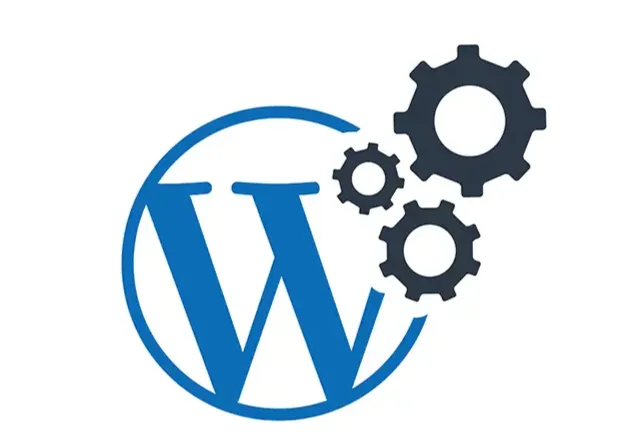CrafterCMS: A Modern Open Source Alternative to WordPress

Amanda Lee

Tired of WordPress? You might not be the only one.
WordPress’s grip on the CMS space worldwide seems to have plateaued. On an upward trend since its launch there has been a recent dip over the last year or two as customers consider other options.
Currently, a lot of the upheaval in the ecosystem has been caused by the ongoing fight between WordPress founder and Automattic CEO Matt Mullenweg and WP Engine, which hosts websites built on WordPress. This TechCrunch article is consistently updated with fresh news which includes cease and desist letters, employees leaving WordPress/Automattic and more.
The WordPress ecosystem is nothing short of drama right now but this isn’t the only thing that should have companies considering their options. This article will highlight some of the problems that companies using WordPress have to deal with, and why CrafterCMS represents a modern, true open source alternative.
The Many Problems Associated with WordPress
WordPress is just as popular as it can be problematic. That’s why seemingly every week there are a number of issues associated with the platform that make it difficult for anyone using it.
Security Flaws and Vulnerabilities
WordPress is a frequent target for cyberattacks with new vulnerabilities surfacing almost weekly. The culprit for these attacks is typically WordPress’s vast plugin ecosystem. Regular patches and updates are needed to secure these plugins and the wider WordPress platform, but more often than not those updates and patches don’t happen, even for the most popular plugins which gives hackers administrative access and free reign of millions of websites.
Performance Issues
Performance is another major problem that WordPress users have to juggle. Sites which use a large number of plugins, have non-optimized themes, or rely on shared hosting environments will likely see their performance suffer. These issues can harm search engine rankings and reduce engagement causing users to jump to the competition instead.
Lack of Scalability for Enterprises
WordPress is almost the perfect choice for small websites and blogs. Unfortunately, organizations at the enterprise level or startups with plans to scale will suffer when using the platform.
As traffic increases it is common to experience issues with site speed and overall stability. Even if the development team implements workarounds WordPress can still feel limited compared to other solutions for everyone in the organization.
Plugin and Theme Issues
WordPress relies heavily on plugins and themes for customization. On one hand this can be good as it provides a number of different options for businesses. Unfortunately, plugins are built by third parties with varying levels of quality, compatibility, and security.
As such, conflicts between plugins, theme compatibility issues, and frequent updates can cause instability and require constant maintenance pulling developers away from other tasks.
Lack of Reliable Customizability
The plugins and themes in WordPress also mean that businesses might feel limited in their customization options. Enterprises that want to build a robust and personalized website that meets their expectations and aligns with the rest of the systems in their tech stack may have a hard time building exactly what they want with WordPress.
Lack of Support
WordPress is a community-driven ecosystem. This works for individuals who just need to do the occasional troubleshooting. However, it also means that they lack dedicated customer support. If complex issues arise WordPress users must rely on forums or third-party consultants for assistance instead of a vendor support team that can be found with another CMS.
Why Enterprises Need More than WordPress
WordPress can be a great choice for a small business but for large enterprises that need advanced features and functionality and robustness from their CMS it falls short.
Headless Functionality
Several enterprises are searching for a CMS that offers headless functionality. A headless CMS separates the backend content repository from the frontend presentation layer, enabling content to be delivered to a number of channels, from websites to mobile apps, IoT devices, and more.
Customers are expecting these types of omnichannel experiences and a headless CMS is usually what businesses turn to to provide it. WordPress offers a headless option to do that but it also means contending with the same plugin issues and also a difficult content structure which doesn’t suffice for most enterprises.
Reliable Security
Security is typically one of the most important factors for enterprises deciding on their next CMS. Companies need built-in mechanisms to meet regulatory compliance, advanced user permissions and single sign-on (SSO), as well as enterprise-grade encryption, DevOps and frequent updates. Unfortunately, WordPress can’t adequately provide these requirements due to the overreliance on plugins and frequent cyberattacks.
Scalability and Performance
Businesses with high traffic volumes such as eCommerce stores or with complex digital needs such as those in highly regulated industries need scalability and performance. Most enterprise CMS platforms are designed to handle these demands including heavy traffic, and publishing content at scale without sacrificing speed or reliability. While WordPress can be optimized, it’s not inherently built for enterprise scalability and may struggle with these intensive demands.
Flexibility and Customizability
Flexibility is important for any enterprise that wants to build personalized digital experiences and create internal workflows to meet specific requirements. This might mean microsites or a unique interface for certain departments, building custom content structures, or integrating with a variety of tools both legacy and modern. With WordPress, it's difficult to accomplish these tasks as it lacks the right customizability that modern enterprises need.
Why Opt For a Headless CMS Instead of WordPress
Aside from the challenges of working with WordPress, there are several reasons for organizations to opt for a headless CMS instead.
Web Experience Platform vs. a Blogging Platform
WordPress has evolved to provide CMS features and functionality and even cater to some enterprise needs, but it is still largely a blogging platform. The user interface and everything related to the platform reflects this.
A headless CMS, by contrast, is purpose-built for content management and designed to create, edit, manage and structure large volumes of content, and all types of web content experiences. It also does this independent of any specific frontend unlike the templated approach of WordPress. This difference provides enterprises with a stronger foundation for building content-driven applications that attract customers.
API-first Architecture
Many headless CMSs can be classified as API-first. This means that they can deliver content to multiple channels as well as integrate with different tools in the tech stack including CRMs, eCommerce platforms and more. This flexibility is invaluable for enterprises that need a seamless content experience across platforms, something WordPress can only approximate with plugins and workarounds.
Omnichannel Content Delivery
While WordPress can be extended to push content to other platforms, it’s fundamentally built around web pages. As such, omnichannel delivery content delivery and the ability to cater to customers no matter the channels where they choose to interact is complex. On the other hand, a headless CMS makes it easy to create and deliver such experiences no matter the channel.
Developer Flexibility
With a headless CMS developers have the freedom to use modern frameworks and programming languages for the frontend. This gives them full control over how content is displayed and allows them to create brand-specific experiences that can evolve with user expectations. In contrast, WordPress’s traditional architecture can limit developers to themes and templates, making it difficult to create the best experiences.
Security
Headless CMSs offer a more secure architecture than WordPress, minimizing the exposure of sensitive data and reducing attack vectors. Enterprise-grade platforms also include dedicated security features to create a safer environment for both employees using the system and customers visiting the website.
CrafterCMS: The Headless CMS Alternative to WordPress
So what options are available for someone ready to abandon WordPress?
CrafterCMS is an open source, headless CMS for the enterprise and offers a variety of features that make it the best alternative to WordPress.
Modern Technology Foundation
WordPress is built on the legacy PHP framework. While this may have provided ease of use in the past, in the current modern age it is slow with performance issues. On the other hand, CrafterCMS is built on the modular Spring framework, a Java-based framework that is perfect for enterprises.
Best-in-Class Content Authoring
CrafterCMS’s best-in-class content authoring app, Crafter Studio offers user-friendly tools to create, update, and publish to any digital channel. This includes drag/drop experience building, multi-channel preview, WYSIWYG content editing and more.
Developer-friendly
As a headless CMS, CrafterCMS is developer friendly. But it’s also proven to increase software development and QA productivity by over 40%. Developers can use REST or GraphQL APIs as well as any frontend UI framework on the frontend such as React, Vue or Freemarker. They can also extend the backend with Groovy or JavaScript frameworks such as Node.js.
Operations-friendly
CrafterCMS doesn’t neglect the importance of operations teams either. Teams can choose between SaaS or self-hosted options as well as take advantage of enterprise-grade monitoring, combined with a small high-performance footprint that scales elastically and globally.
DevContentOps
CrafterCMS offers unique support for DevContentOps processes that enable seamless collaboration between software development teams, content teams, and IT operations. This brings the benefits of DevOps to content-driven applications, products, and digital experiences including faster content updates faster and software feature releases.
Multi-tenant CMS
CrafterCMS is a multi-tenant content platform. This allows enterprises to create any number of projects, sites and apps operating all on the same underlying infrastructure and assign certain sites to different groups, restricting user access to only the specific sites in their region or department so that everyone can remain focused.
Ultra Secure
Unlike WordPress, CrafterCMS offers security that enterprises can trust. This includes a truly enterprise decoupled architecture, identity and access management, authentication protocols, encryption strategies, secure APIs, a private SaaS deployment option, a Trust Center and more.
True Open Source
CrafterCMS is distributed under an open source license (GPL v3) without the drama that plagues WordPress and other open source communities. CrafterCMS is backed by an enterprise-grade support team. It also has an OSI-approved license, leverages leading open source technologies such as Git, Spring, Opensearch, React, GraphQL, Groovy, Freemarker, Docker, Kubernetes and more.
CrafterCMS Marketplace
CrafterCMS offers a composable architecture that allows companies to add other features and capabilities via API integrations or plugins in the CrafterCMS Marketplace. This is a home for the CrafterCMS community to contribute, find, and use extensions that can extend the CMS and provide additional functionality.
Download CrafterCMS Now
If you think you’re ready to move away from WordPress toward a modern, truly open-source and enterprise-grade headless CMS then download CrafterCMS now.
Related Posts

Is Your CMS MACH-Ready? A Practical Guide for Enterprise Architects

Sara Williams

Composable DXP vs Traditional DXP: Why Enterprises Choose CrafterCMS

Amanda Jones

Connecting Content and Campaigns: Integrating CrafterCMS with Salesforce Marketing Cloud

Sara Williams

From Content Author to AI Co-Creator: The Next Evolution of CMS Workflows with MCP

Amanda Lee










